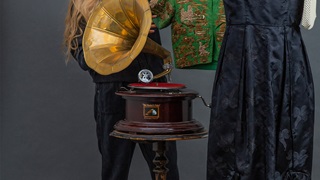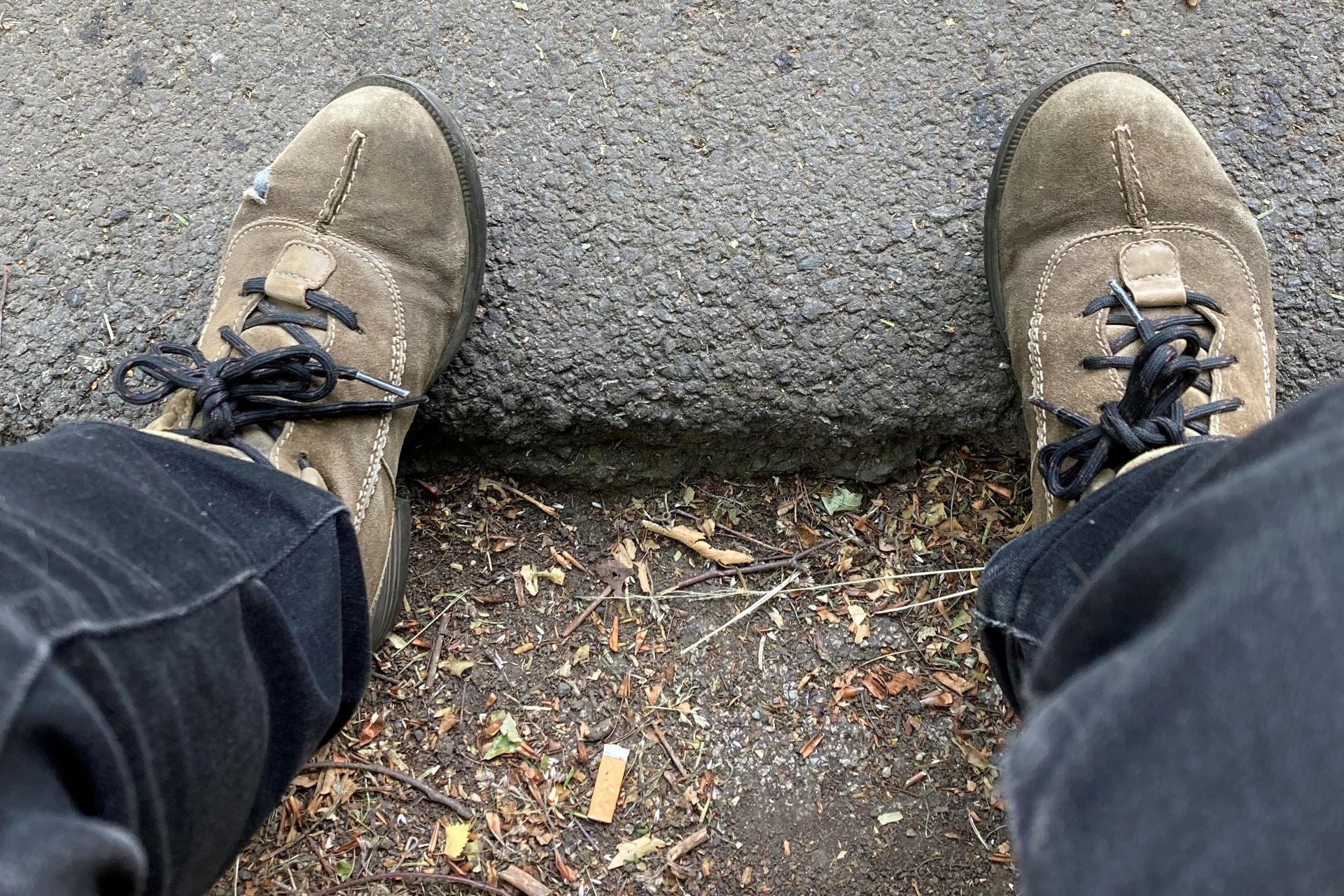
Style
There's more than one way to live in style


Tweed ties, fedoras and shoe polish
My maternal grandfather was an Australian steelworker who had minimal education as a child and toiled his entire life in a steel mill. His days and nights were filled with molten iron and furnace heat.
He was a renaissance man. He returned to university as an adult and obtained a degree while working night shifts. He was fascinated by ancient history, the Romans especially, and right up until his last days, he surrounded himself with history books and old coins. He was a collector (a hoarder) of many things: coins, stamps, books, early jazz records. To anyone who would listen, he told grand tales of travel and of Rome. I am still not sure if he had actually visited the places of which he spoke.
My earliest memories of him are of tweed ties, fedoras and shoe polish. He never left the house—and I mean never—without a shirt, a tie, a hat, and leather shoes that had been polished to a high shine. This was a ritual that I observed countless times. Hunched over, assidulously applying just the right shade of polish, briskly shining his shoes with a horsehair brush—achieving military-level precision and mirror-like shine. There was never any question of shortcutting the process or, Heaven forbid, skipping the shoe-shine entirely. It was, to him, a routine as fundamental as brushing one’s teeth, a task that needed to be done before one could tackle the day ahead.
As a child I was embarrassed by this. Going to the corner store to buy milk with a grandfather who is dressed to the nines— “you never know who you might run into”—brings a unique level of mortification for a ten-year-old. Only later in life did I stop to think about his obsession with shining his shoes. A working-class man, reborn, university educated. My grandfather had made it, and he was going to dress like it, starting with his shoes.
Vellies to pompoms
Velskoens: Most South Africans will recognise a pair of ‘vellies’. The South African entertainer, David Kramer, had a red pair that my four-year-old self coveted. Mine were tan and had red laces and were bought at the local farmers’ co-op. I wore them with denim dungarees.
Marble platform clogs: All the cool kids went to ‘the big city’ to shop. I saved all my pocket money for when it was my turn to go. It was love at first sight with the clogs. Chunky stacked platform, patent pleather, and a grey and white marbled design. I was literally on top of the world. Ten inches taller. I wore them after school when I walked down the dirt farm road to have tea with my gran.
Yellow snakeskin slingbacks: Elegant shoes in jewel tones graced the shiny glass shelves of the Kings Road shoe store in London. I looked down at my heavy black boots and decided to swap every plain shoe in my wardrobe for delightful new treats in yellow snakeskin, teal silk with goldfish and fuchsia suede. I wore them as a bright accent to mostly black attire.
Red-soled strappy sandals: I saw them in magazines. Glamorous women showing glimpses of red soles. Christian Louboutin is an engineer, an artist and a magician. Internet shopping had just become a thing, and I had my first pair delivered to the New York office. A colleague put them in the internal mailbag to London. I carried them in my hand while having my wedding photos taken on the beach.
Pink pompom courts: Facebook suggested I take a look at them. A bright pink glittering exterior and a giant pinker-than-pink fluffy pompom on top. They were not the kind of shoes a mom would wear. They required confidence and a devil-may-care attitude. They were ‘too much’ and ‘too fun’ to wear to work or anywhere at my age. I wore them to the office.
I shall go shoeless into the world :
One thing you learn is that, however much you may love shoes, they’re not going to stay with you, they’re not going to stay the course. They will leave you. The leather cracks, splits appear, stress-lines, that you ignore because, yes, you love those red leather ankle boots, the way they look on your feet and in the mirror, yes, but not enough to get out the polish and the brushes and feed the leather, shine the boots up. Once in a blue moon, yes, but every week? Every night? I don’t think so. I wish I did look after my shoes. But I don’t.
It’s not all about nurture. Sometimes—most of the time—it’s not them, it’s you. You have grown, you’ve changed, moved on. On Boxing Day, years ago, I walked over the hill and down the lane under the railway bridge to Helen’s. I was fourteen, there was snow underfoot, snow on the walls and the trees, and I was happy. That’s it. I was out there in the world in my black miniskirt and my black-and-red jumper and my new knee-high black suede boots. This was in the days of Mary Quant, not that Mary Quant had ‘arrived’ in Dover, but I knew that I was cutting a dash and I needed someone to witness my blaze of glory. Every bit of that day was—walking over to Helen’s, saying hello to her Mum and Dad, sitting in her bedroom discussing green eyeliner, it was all good. It doesn’t last. I grew out of the boots and later Helen died of stupid brain cancer and breast cancer, leaving two children.
By then, I had gone through a phase of brown ankle boots paired with green culottes; but not heels. Somehow, I never grew into a high-stepping high heels sort of person; a slinky, wrapped-around dress-and-heels sort of a girl. I would have liked to. At sixteen, I had a boyfriend whose family drove a leather-lined Rolls Royce and had stables. I should have guessed that Lee would lose interest. His parents lived in the country and collected art and I lived on a council estate on the edge of town. At a New Year’s Eve gala, his brother’s girlfriend, a dental technician, wore a brown, clingy, strapless dress; and I wore a puffed-sleeve, flowered maxi dress of blue velvet that my mother had made for me. I don’t know what shoes I wore that night but not heels, that’s for sure, and certainly not glass slippers. Lee and I were doomed. Their Rolls Royce rolled into the cul-de-sac in the estate to drop me off at the back gate, where the bins were stacked by the high, wooden fence, and I did wonder what he made of that.
I moved on to black granny lace-up shoes that had a Victorian punk feel about them. It’s possible they came from Camden Lock Market. But they, too, bit the dust, along with the green El Naturalista shoes that I cycled across London in. You cannot expect shoes to stay, not if you don’t cherish them, and even then.
It’s all fine. It’s not as though I suffer from an attachment to shoes. But occasionally there is a longing. I took my son once to Barcelona and we walked the length of the quiet August city streets, most of the shops with their shutters down, waiting for the cool autumn light, but I found one small shoe shop open. I bought black latticed-leather shoes, red open-toe sandals and creamy, marbled-milk court shoes with bows on—three pairs of shoes in one half hour, in Barcelona.
That was then. Before then, long before then, I was dispatched to West Berlin, to Young Königswinter. All of my life I had been going to Berlin—I was there the day the Wall started to appear; I had family in Reinickendorf; I had childhood memories. But I had never gone across to the other side. I was always a child. This time, I was twenty-five, it was 1983 (so still the Cold War) and I hid a Solidarność badge next to my Greenham Common badge inside my cigarettes and with a few others crossed over into East Berlin. I wore a tight-fitting dress that had belonged to my mother decades earlier, and narrow, elegant kitten heels. We saw Brecht at the Berliner Ensemble. That’s all I recall. That, and the feeling of bliss.
Later that night, as we walked back to the border crossing, my feet were hurting me. I took my shoes off and walked barefoot down the night streets of East Berlin, and each step hurt, but I couldn’t go back, couldn’t put the shoes on again, my sore and tender feet wouldn’t fit, so I walked barefoot from East to West, and my life, I felt, was just beginning.
That’s the moment in time when time stopped and time ended and time began.
Scholars in their green shoes
Not many scholars wore green shoes to school. Especially when the school dress code required that they be black and of a ‘conservative style’.
I had unusually large, broad feet as a youngster, and my mother had a narrow, thinly spread budget. She had recently discovered a Dutch shoemaker who had just set up operations in a tiny glue- and leather-filled shop in our seaside town of Fish Hoek. Hans was duly commissioned to make me a pair of brown leather hiking boots. They fitted perfectly. Rubbed soft with Dubbin, they made my days of hiking in the Cape mountains in the soft spring weather an absolute pleasure. Encouraged by my endorsement, and daunted by the prices of shop-bought shoes, my mother asked Hans to make me a pair of handmade black shoes for school. What these lacked in style (and my best mate Craig, who believed himself to be positively teetering on the cutting edge of late 1970s teenage fashion, dubbed them my ‘clumpy clogs’) they more than made up for in comfort.
I never did get those black shoes to shine, not to the required standard, despite lashings of Nugget shoe polish and frantic buffing. But otherwise all went well—until the winter arrived and dramedy struck. The Cape of Storms produced weeks of soggy, inclement weather and the matt black dye of my new shoes turned to a mouldy olive green. My shoes looked like two sodden paninis. School inspections became nightmares. At a time in my school life when keeping a low profile was paramount, my green shoes changed all of that. Every day, the unwelcome glare of teachers and prefects followed me from assembly to class.
Furthermore, I needed to travel to school by train. In the mornings the train was filled with malicious school children from the various schools in the suburbs between Fish Hoek and Cape Town. I did receive the odd sympathetic look from some adults, but mostly I had to endure the agonising tittering giggles of my peers. In those days we still had uniformed train conductors, who would barrel down the swaying carriages clipping tickets. They universally despised school children for their feet on seats, errant chewing gum and clutter of satchels, bags and sports equipment. But my plight caused even one of these caustic worthies to announce in Afrikaans: “Jammer, maar jou skoene lyk en ruik net soos vrot kaas!” (Sorry to say, but your shoes look and smell like rotten cheese!)
At the end of that year merciful fate intervened: the sole of one shoe departed, so as to speak, on my walk from the station to school, and I flip-flopped my way through the lessons and limped home bound up with silver duct tape; that very night, my black school shoes were laid to rest.
By Monday, I was the proud possessor of a brand new pair of Bata Toughies. My newly shod feet dazzled—as a waxed limousine shines in the summer sunshine—but, oh, the weeks of painful blisters that ensued! I longed as I never thought I would for the snug, glove-like fit of my (mouldy) green shoes.

Shall I compare thee to a summer's day? | Alexandra Howe reads sonnet 18 | Issue 20 | 2022

'I think my father did a brave thing in marrying my mother' | Andrew Robinson in conversation with Ingeborg Alexander | Issue 17 | 2020
© Norton Rose Fulbright LLP 2025